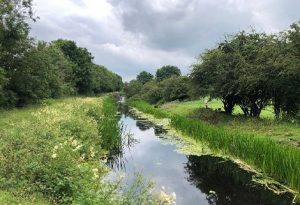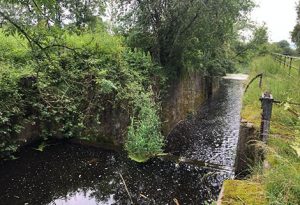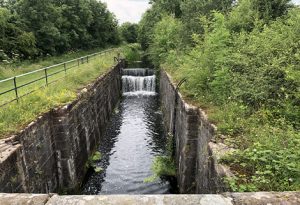exploring the lancaster canal
History
The Lancaster Canal was once a busy waterway, transporting limestone and coal via its seaports of Milnthrope and Lancaster, commodities which gave rise to its nickname of The Black and White Canal. Opened in 1799, it was extended into Kendal in 1819 and down to the sea via the Glasson locks in 1826. Sadly the northern reaches were cut off with the arrival of the M6 motorway in 1968 but these remain beautiful stretches none the less. The navigational section of the canal is 41 glorious miles whose beauty is hard to beat. As a waterway it has so much to offer and delight: an exciting passage to reach it via The Ribble link, stunning countryside, panoramic views of The Lake District and Morecambe Bay, a branch that connects it with the sea and two lively and historic cities to discover.
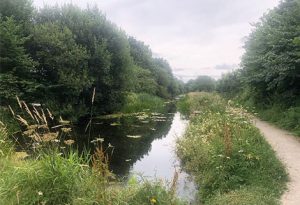
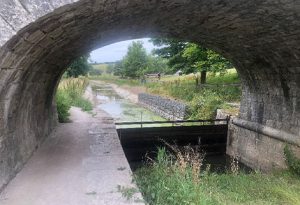

Southern Canal
There are two ways of exploring The Lancaster canal, either by hiring a boat or taking your own along the Rivers Douglas and Ribble. Latter visitors will arrive at the junction from the Savick Brook close to Preston. I recommend turning right and staying at the lovely Cadley services which has secure car parking and an area for BBQs. The canal’s southern terminus is only a mile away and it is a treat to walk along the tow path to admire the steep gardens that run right down to the water. The canal was shortened by a mile many years ago and now starts just south of Ashton Basin. Preston seems to be a city of churches but also of parks and green spaces. The excellent Haslam Park has much to offer as does the restored Victorian pleasure gardens of Avenham. The 20mile bike trail 'The Guild Wheel' winds it way through its paths and along the River Ribble.
The first section north is beautiful and green with the fields’ edges caressing the waters often trampled by generations of cows and sheep. The boater is aware that the main coast railway, M6 and A6 are never far away but the peace of the canal is still prominent. The village of Bilsborrow is dominated by Guy’s Thatched Hamlet and Owd Nell’s, an eclectic collection of buildings, accommodation, pubs, and restaurants, a fun fair and bowling green. As a people watching location it is excellent! There are also some other canal side inns, a handy PO and shop.
The pretty market town of Garstang is only five miles further north; there are some good independent shops as well as a couple of supermarkets. The walk along the river is lovely and Garstang basin has several attractive buildings, a pub and moorings. A little further on the boater arrives at the services and further moorings where it is very pleasant to spend a week or so. More rural countryside emerges as you glide along the waterway towards Potters Brook, passing under John Rennie’s stone bridges. Just past bridge 85 is the left hand turn down to The Glasson Branch. It is well worth a trip down the 6 locks to see the sea and the remains of the once busy port. The Conder Valley is quiet and unspoilt and ends in salt marshes and the estuary of the powerful River Lune, the tide comes in at such a rate you can hear it before you see it.

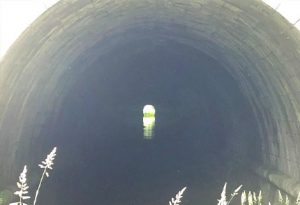

Mid-Section
Back on the main canal the cut begins to change its appearance as one nears the historic port town of Lancaster, another grand place to spend a bit of time. There is much to explore: a castle, several museums, (including the maritime one), beautiful squares and interesting streets and buildings. There are still some fine examples of old mills along the tow path. It is not long before the amazing Lune aqueduct is reached which carries the canal over the river some 600ft below. It was built by Alexander Stevens who died before it was completed in 1797.
As the canal continues north it turns towards the west and the astonishing Morecambe Bay comes into view at Hest Bank. It is possible to moor up and have a sea view with the Lakeland fells in the background: possibly one of my all-time favourite places to stop. Carnforth is the next town to be reached; there is a sanitary station in the basin along with a pub and petrol station that sells gas and fuel. The roar of the M6 becomes the dominant noise and the peace is disrupted for a while as you pass under the motorway towards the Keer aqueduct. The last pretty place to stop on The Lancaster is Borwick, a lovely village situated around the green. As you journey along the final mile of the canal the motorway gets louder and louder until you come to a rather abrupt halt at the canal’s terminus next to a service hut. The M6 is only 10 meters away the other side of a mesh fence.
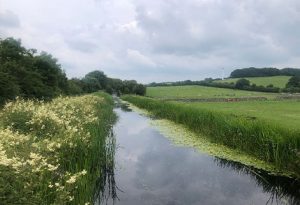


The Northern Reaches
Beyond the terminus it is possible to continue on foot to the Tewitfield locks, these were last used in the early 1940’s but the chambers look as good as ever even though there are no longer any gates. A footpath takes you over the M6 and deposits you on a beautiful towpath, which in the spring was lined with wild flowers. The navigation has water in it for 8 miles and one expects a boat to come chugging by at any moment. The M6 intercepts the waterway in two other locations but it is possible to proceed to the end of the watered section. The Lancaster Canal Trust have dug out, lined and re-watered a ¼ mile stretch, and they have ambitious plans to reinstate the canal all the way to The Canal Head in Kendal if the finance can be found. The Hindcaster Tunnel and the amazing horse tow path over the top is another reminder of the quality of the construction and engineering of this once important canal. The final miles into Kendal have no water in them and in some sections, due to dense vegetation, it is impossible to see where the canal used to run, only the bridges, still standing proud and strong, hint at the now ghostly course of the navigation.
In conclusion, having spent four months on The Lancaster Canal, I can thoroughly recommend boating there and hope that one day the navigation is restored all the way to Kendal.
